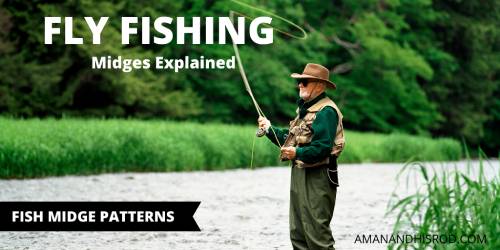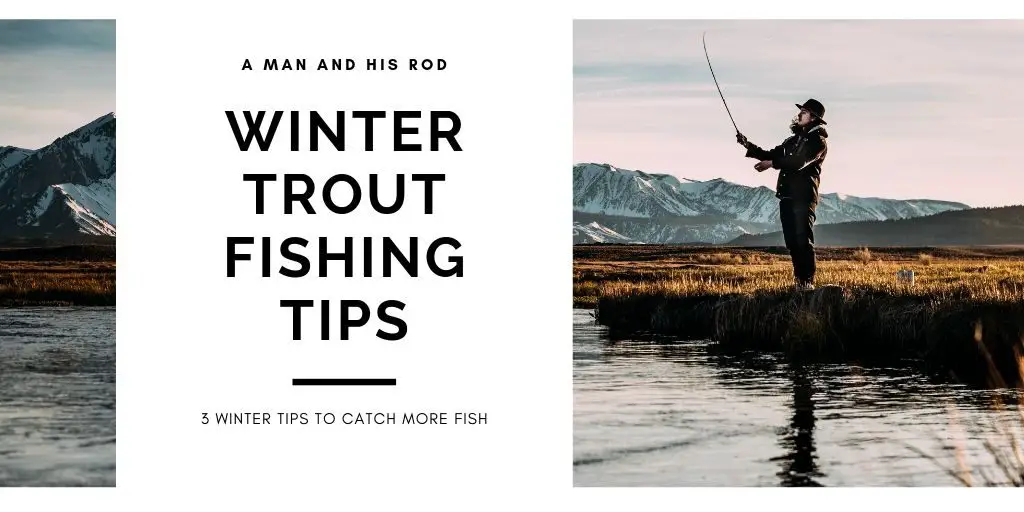
If you have been a fly fisherman for any length of time I shouldn’t need to convince you to fish midge patterns.
These little chironomids may be small but fish eat them by the boat loads.
In this article we will go over the following:
- What are Midges
- When yo Fish Midge Patterns
- Tips on Where to Fish Midges
- How to Fish Midge Flies
- Types of Midges
I will show you some examples of midges in each stage of life.
This website is reader supported. Any purchases you make through links on this site earn us a commission at no additional cost to you. Thank you for your support!
What Are Midges?
Good question, midges are also known as chironomids and are a type of fly that live all over the world.
They have various stages of life including egg, larvae, pupa, and adult.
The longest stage of their life cycle is the larva stage.
During this time they will burrow into the bottom gravels and sediment of rivers, streams, and lakes.
Once they begin to develop more they turn into pupa and swim or float their way to the surface in order to begin adulthood.
Once they reach the surface, also called emerging, they will become a fly that closely resembles a mosquito.
It is important to understand the stages of the midges life cycle in order to understand what flies we should be fishing.
Now that you know a little more about what midge fishing flies are, let’s move on to when and where to fish midge patterns.
When to Use Midge Fishing Flies?
When is the most appropriate time to fish midge patterns?
Well often we will see hatches during the early morning hours and the late afternoon hours.
That’s not to be said that a change in the weather could cause a mid day hatch to occur.
When temperatures get warmer you may be able to visually see the hatch start.
Generally speaking, midges are fished all year long. Keep in mind the 4 stages of the life cycle that we referred to earlier.
Fly Fishing Midge Patterns in Winter is my favorite season to use them.
The reason for this is during the summer, spring , and fall we have so many other options to choose from.
You have more hatches occurring during those times of year that its easy to wander away from the smaller midges.
Where to Fish Midge Patterns
Luckily, where to fish midge patterns is a lot less of a mystery than the other topics in this article.
Midges live in almost any aquatic or semi aquatic habitat. We should be considering midges any time we are fly fishing a body of water.
The midge is most commonly used in rivers and streams with fly fisherman.
Often though, the midge pattern is overlooked when fishing lakes and reservoirs for trout.
Don’t overlook stocked trout ponds when fishing midges either. I have had great success there as well.
I have had some tremendous success fishing midges in lakes.
One thing that I love to do before I ever even wet my line is dig up some rocks or gravels with my net.
Sift through the debris to inspect for any forms of life.
Almost always I can find some sort of evidence that midges are present in the environment.
How to Fish the Midge Fishing Fly
Midges are small therefore they may sometimes be hard to present to the fish.
Midges can be fished as various forms of fishing flies.
They can also be presented in a number of different ways including, sub surface, surface, Czech nymphing, hopper droppers, and that’s just to name a few.
I could spend a lot of time discussing each variation. Instead I will explain a typical midge fishing setup.
If you would like a great book about how to fish midges, check out Nymph Masters.
How to Rig and Fish the Zebra Midge
Here I will explain how to set up and fish the zebra midge.
This is a very easy to use fly that will catch small fish and big fish alike.
I will start by saying that I fish these flies predominantly for trout. Midges will catch rainbow and brown trout with ease.
The Zebra midge can be used Fly Fishing Small Streams, Fishing Stillwater (lakes and ponds), and when Fishing Rivers for Trout, salmon, or steelhead.
How to Rig and Fish the Zebra Midge
1. Start off by selecting the midge you wish to fish. Typically I use small zebra midges in the 18-24 size range when fly fishing for trout.
2. Rig your Zebra Midge. Assuming you have your fly rod assembled and ready to tie on your leader, use a nail knot and attach a fluorocarbon leader. You can use other fishing lines, fluorocarbon will sink and allow your midge to get down faster. It is also less visible than monofilament fishing lines. Tie on your fly as well.
3. Cast the Zebra Midge to your desired location. If fishing lakes this is pretty straight forward. While in rivers and streams we will want our midge to be in slower moving waters. This is a light fly, strong current will make fishing the midge impossible.
4. Allow your fly to make a full drift. Letting your fly make a full drift is the best way to fish a midge. Allow that fly to churn and twist its way through the current and pass by as many fish as possible.
5. Take you time fishing Midges. This fly requires finesse and patients. Cover every ounce of water fishing every pocket and riffle. Remember these flies are tiny, trout can see well, but your fly can easily escape them as well.
Types of Midge Patterns
There are various types of midges and patterns.
It can get confusing sometimes trying to keep track of every single type of fishing flies.
The following sections should help understand some of these styles of midges.
Midge Egg Fly Pattern
Eggs are the natural starting point of any midge. Undoubtedly midges eggs are a part of every fishes diet more than likely.
As water levels rise or currents increase, midge eggs can become dislodged.
Most fly fishing egg patterns pertain to fish eggs. If someone can tie a midge egg with a hook I shall be thoroughly impressed.
Midge Nymph Fishing Flies
When Nymph fishing we are fishing the stage of life were the midges are still under water in the larval stage.
One classic pattern is the Zebra Midge. I usually fish these midge from size 18-24 but predominantly a size 22.
Because these flies are so small there are ways we need to optimize our success and create more opportunity.
Midge Emerger Fishing Flies
When fishing emergers we are targeting that stage of life where the midge floats to the surface and breaks the tension of the water to become an adult.
Now, I’ll admit that fishing emergers is always a challenge for me still to this day.
It is a very precise technique that must be done just right.
I say this because often the emerger will sit stagnant in a certain area of the water column giving a fish every opportunity to inspect its meal.
Dry Fly Patterns
This is the adult stage of these aquatic insects. This may possibly be the most fun to fish at times.
With these caddis flies sitting atop the surface of the water, this visual stimulation for the fisherman is quite exciting.
There are over 1200 species of caddis flies. Keep it simple here is what I would recommend.
Find a few simple patterns that work in your area. For most areas you will find that a simple tan or white, black, and brown will cover most of your caddis fly needs.
Conclusion – How to Fish Midge Patterns for Trout
Hopefully by now you have drawn to the conclusion that midges may be the most important fly you carry. Fish of all species in all bodies of water are eating midges in some form more than likely.
If you would like to add some midges to your collection feel free to click on any of the images in this article. You won’t be sorry you did!
If you have enjoyed this article please feel free to share it on social media. Help me get the word out about midge Fishing.
You may also like some of my other articles regarding fly fishing.
Top 3 Flies for Finicky Winter Trout is one our most popular posts.
For trout fishing you may like 11 Proven Tactics to Catch More Trout.





